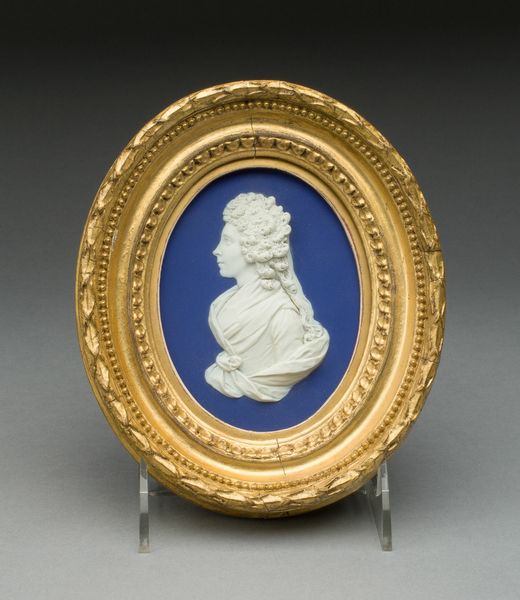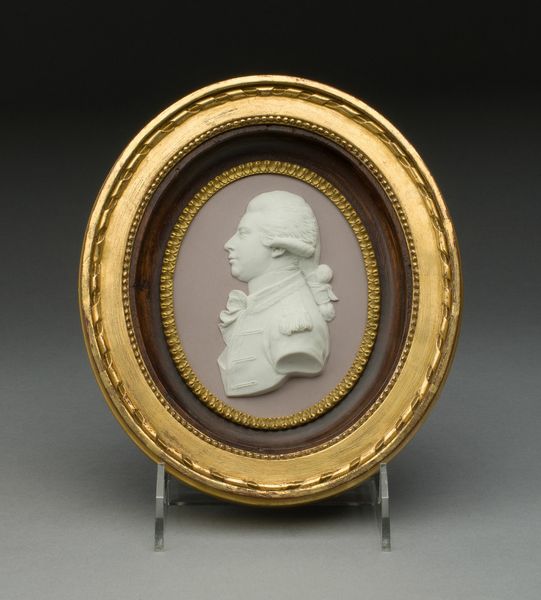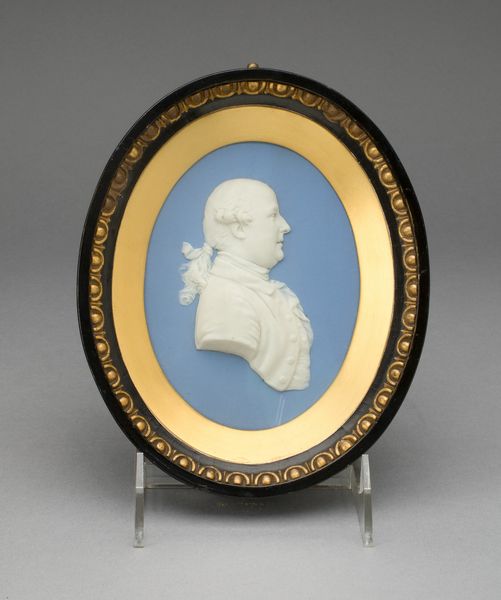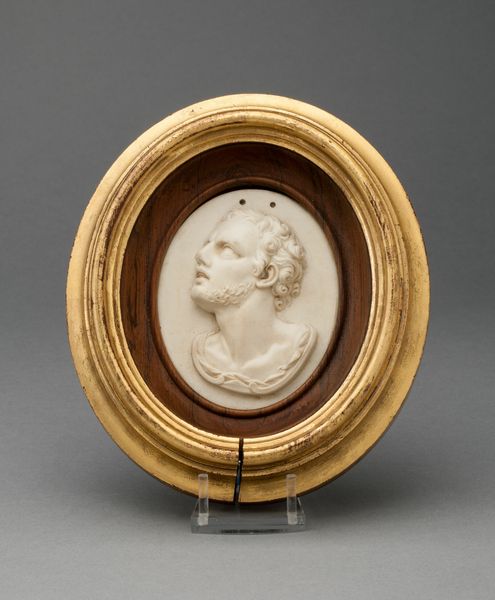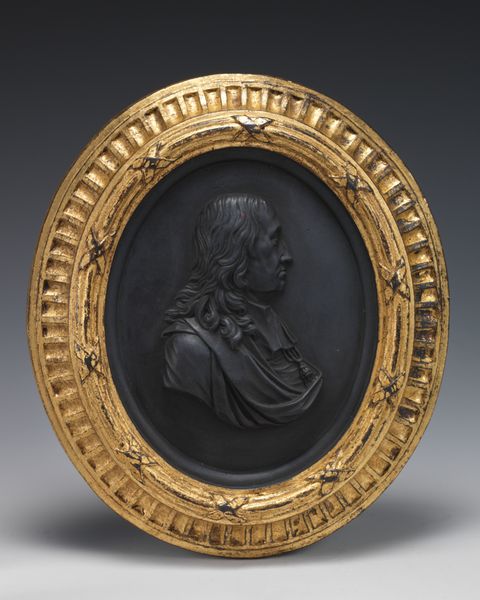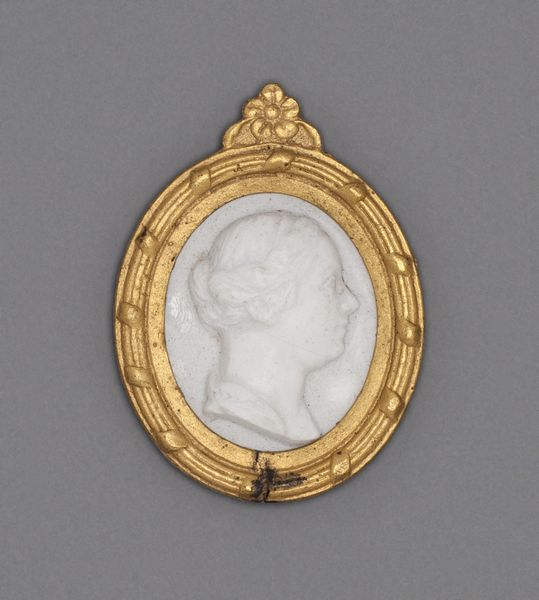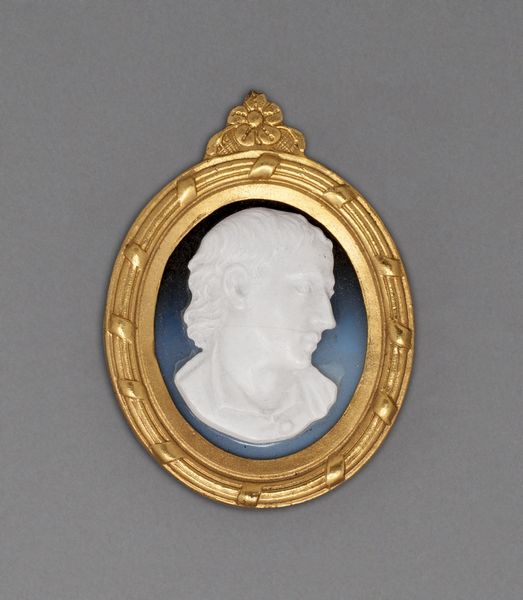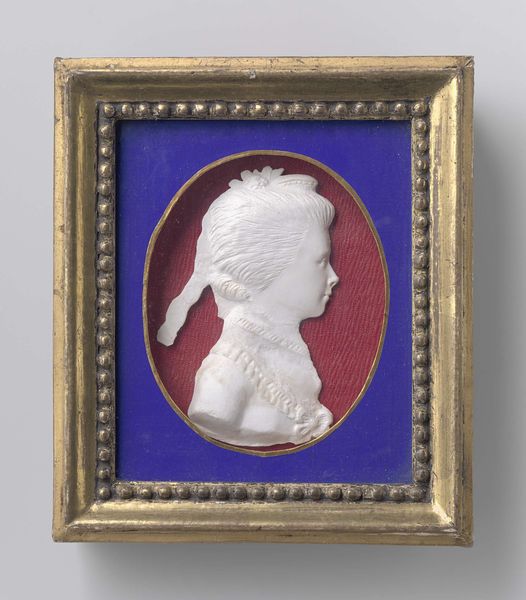
Plaque with Portrait of George Nugent-Temple-Grenville, Marquis of Buckingham 1789
0:00
0:00
ceramic, sculpture
#
portrait
#
neoclacissism
#
ceramic
#
sculpture
#
decorative-art
Dimensions: 17.2 × 14.6 × 3 cm (6 3/4 in. × 5 3/4 × 1 3/16 in.)
Copyright: Public Domain
Curator: This plaque, currently housed at the Art Institute of Chicago, presents a portrait of George Nugent-Temple-Grenville, Marquis of Buckingham. It was crafted in 1789 by the renowned Wedgwood manufactory, a true gem of Neoclassical decorative art. Editor: It’s wonderfully... reserved, isn’t it? That pale blue against the creamy white relief. Gives it such a refined, almost aloof presence. It reminds me of cameos my grandmother collected, somehow capturing a person’s essence in miniature. Curator: The appeal definitely lies in Wedgwood's meticulous approach to material and production. These plaques were highly sought after, and reflect the era's fascination with classical forms. Notice the precision of the ceramic work. It speaks to a division of labour geared towards efficient, high-quality reproduction. Editor: I see it! It’s less a window into Buckingham’s soul, and more a testament to Wedgwood's technical prowess. This raises a question of labour and artistic merit. The human touch—did individual artisans see themselves reflected in their repetitive labour, or only the wealthy patron represented by this finished artwork? Curator: That's precisely the point. The social context of creation dictates, in part, its meaning. Wedgwood revolutionized the production of ceramics, making "high art" accessible to a burgeoning middle class. Consumption patterns reveal class aspirations. Editor: Still, beyond the social implications, there's something... charming about this little portrait. Like a porcelain whisper from a world obsessed with decorum. Did Buckingham even like it, I wonder? Curator: We might not know his specific reaction, but consider its function as a signifier of status and taste within the social circles that defined his identity. He likely understood its value as much more than mere decoration. Editor: So, from the clay to the Marquise’s wall, it's a layered history lesson wrapped in a delicate cameo. Thank you for unraveling it with me! Curator: The interplay between material production, artistic intent, and social value makes exploring such objects truly enriching, don’t you think?
Comments
No comments
Be the first to comment and join the conversation on the ultimate creative platform.
